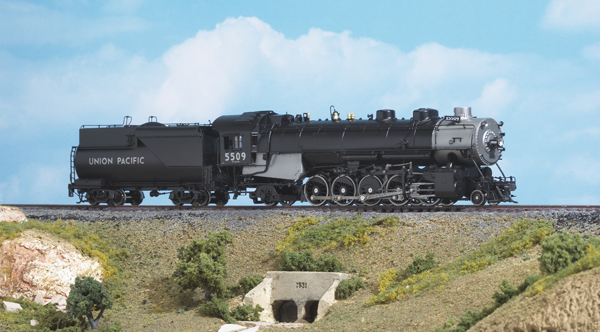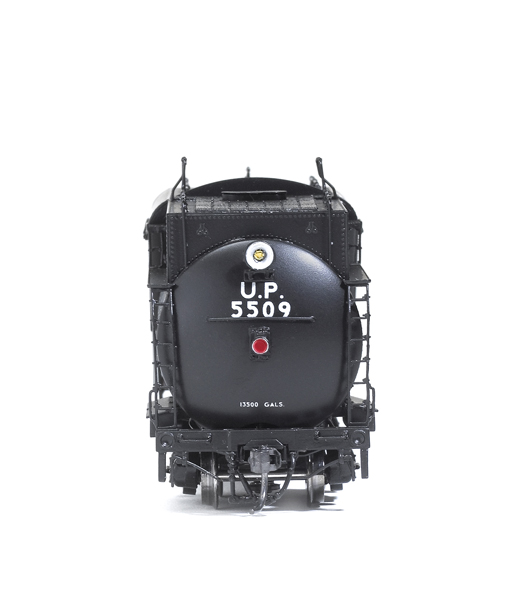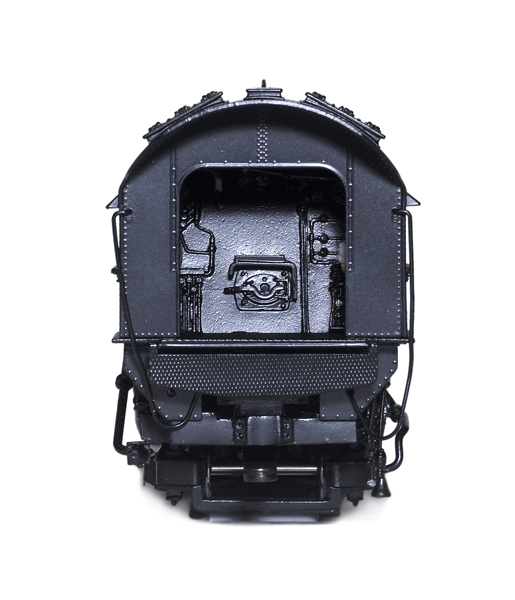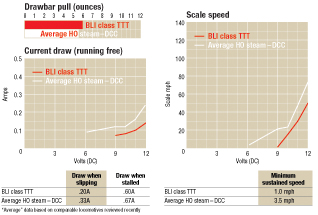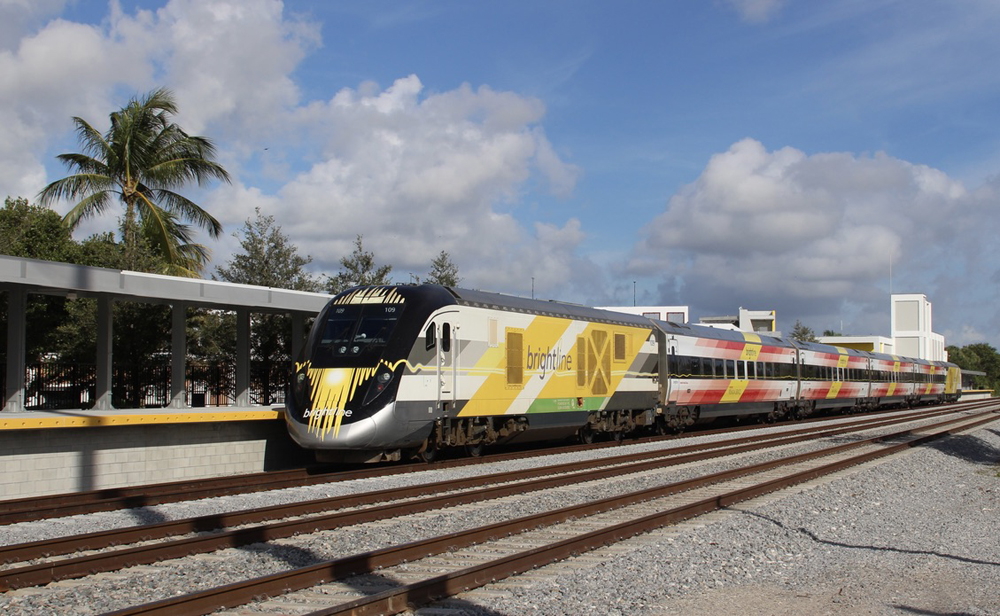Class TTT. Although called Santa Fe types on other railroads, locomotives with a 2-10-2 wheel arrangement were known as class TTT (Two-Ten-Two) on the Union Pacific RR. Between 1917 and 1924 the railroad received a total of 144 class TTT locomotives in seven subclasses. Alco, Baldwin, and Lima built 2-10-2s for the UP.
There were many variations between the TTT subclasses, including several different feedwater heater types, Walschaerts or Young valve gear, and different tenders. Some were coal-fired, while others were oil-fired.
The TTTs were originally developed to handle freight over the 1.14 percent Ogden-Wasatch grade without additional helper engines. These locomotives served across the UP system into the 1950s until the end of the steam era. The BLI model represents UP class TTT-6 locomotives delivered by Baldwin in 1923 as they appeared late in their careers.
All dimensions of the locomotive and tender match those in Motive Power of the Union Pacific by William Kratville (Barnhart Press). Placement of boiler appliances matches those found in descriptions of UP TTT-6 locomotives in the Union Pacific Historical Society’s The Streamliner vol.4 no.1. The locomotive’s Vanderbilt tender has a water tank with a rectangular extension that raised the tank’s capacity to 13,500 gallons.
All the BLI models feature this tender, Young valve gear, and Worthington 4 BL feedwater heaters. Some models include an optional snowplow front pilot. Most of the models have coal tenders, though our review sample represents the oil-fired no. 5509.
The cab interior includes painted engineer and fireman figures. The stoker-free backhead is appropriate for the oil-fired prototype.
A powerful puller. The five-pole skew-wound can motor and brass flywheel are housed inside the locomotive boiler. The motor is connected via a gearbox to the third set of drivers, while the other drivers are turned by the side rods.
None of the drivers has traction tires. However, the weight of this mostly metal model and its powerful motor give the BLI 2-10-2 an impressive drawbar pull equivalent to 84 HO scale freight cars on straight and level track.
The locomotive drawbar has two holes to connect the tender, the farthest hole allows the 2-10-2 to negotiate a 22″ radius curve, while another hole allows for closer coupling. A six-wire cable connects the dual-mode decoder and sound system in the tender to the locomotive. A downward-facing speaker is mounted inside the tender.
As the locomotive started moving the sound of four chuffs per wheel revolution were synchronized to the motion of the drivers. There’s also the separate hiss of the open cylinder cocks until the locomotive reaches about 12 scale mph. (Function 7 arms the open cylinder cock feature.)
The class TTT has a shrill UP freight whistle. The bell has the staccato sound of the mechanical internal-clapper type bell ringer that replaced the original rocker type ringer.
You can trigger the whistle and bell as well as program some sound effects in DC mode using the power pack or a Quantum Engineer analog DC controller (sold separately). More options are available to DCC users.
There are 13 DCC functions available on the model. These include a Doppler effect (Function 6) and a heavy load feature (Function 9). The latter allows you to keep the locomotive’s speed constant, while making the engine chuffs more labored as when the locomotive climbs a grade.
All lighting effects also operate in DC and DCC modes and are provided by light-emitting diodes, including a cab light and constant headlight. In reverse the headlight dims and the tender backup light and red marker light shines. On the prototype the marker light was used only when the locomotive ran without any cars behind it.
In DCC I adjusted many of the model’s configuration variables (CVs), including its long address and the volume levels of individual sounds. A QSI user’s manual that lists all the CVs is available online at www.broadway-limited.com.
The model didn’t start moving in DC until I advanced the throttle of an MRC Tech 4 power pack to 9 volts. The BLI steamer crept along at 1 scale mph and accelerated smoothly to a top speed of 50 scale mph at 12 volts.
Using an NCE Powercab DCC system, I ran the model in speed step 1 at 1 scale mph. The locomotive accelerated to a top speed of 57 scale mph at speed step 28, which is close to the prototype’s top speed of 60 mph. The BLI class TTT also supports 128 speed steps for more precise speed control.
With its accurate detailing and powerful mechanism, the BLI class TTT would make a great addition to an HO scale UP steam roster.
Price: $450.00
Manufacturer
Broadway Limited Imports, LLC
4 Signal Ave
Ormond Beach, FL 32174
www.broadway-limited.com
Road numbers: (all Union Pacific) 5509, 5044, 5053, 5507, and undecorated
Features
Drawbar pull: 6 ounces
Dual-mode DCC sound decoder
Electrical pickup on all drivers and tender wheels
Five-pole skew-wound motor with brass flywheel
Kadee magnetic knuckle couplers at correct height
Minimum radius: 22″
Painted metal locomotive and tender wheels in gauge
Sprung drivers
Weight: 1 pound 131/2 ounces (locomotive and tender), 1 pound 7 ounces (locomotive)





